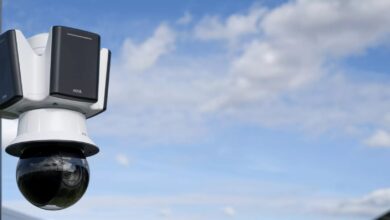Lenovo Bolsters Quantum-Safe Security and AI-Driven Cyber Defense for a Post-Quantum Future

According to Shashank Sharma, Vice President & General Manager, Lenovo META, Lenovo is proactively addressing the disruptive potential of quantum computing and AI-powered cyber threats by investing in quantum-safe encryption, AI-enhanced endpoint protection, and zero-trust architecture.
With the rapid advancements in quantum computation, how is Lenovo preparing for the potential disruption this technology could bring to current encryption standards and enterprise data security?
We recognize that quantum computing represents both a transformative opportunity and a significant challenge, particularly when it comes to encryption and data security. The potential for quantum machines to break widely used cryptographic algorithms is real, and we’re taking proactive steps to ensure our enterprise solutions remain secure in a post-quantum world.
One of the key areas we’re investing in is quantum-safe security. We’re exploring technologies like Quantum Key Distribution (QKD), which leverages the principles of quantum mechanics to create encryption methods that are fundamentally resistant to quantum attacks. This is part of our broader strategy to future-proof our infrastructure and protect sensitive data across industries.
We’re also focused on crypto agility, designing systems that can adapt quickly to new encryption standards as they emerge. This means our enterprise customers will be able to transition seamlessly to post-quantum cryptographic protocols once they’re standardized by global bodies like the National Institute of Standards and Technology (NIST).
Beyond technology, we’re committed to education and collaboration. We’re working closely with our partners and customers to help them assess their cryptographic risks and prepare for the quantum shift. It’s not just about being ready; it’s about leading the way in secure innovation.
Ultimately, Lenovo’s approach is grounded in resilience, adaptability, and trust. We’re building the tools and frameworks today that will safeguard enterprise data tomorrow, no matter how disruptive quantum computing becomes. This aligns with the UAE’s Telecommunications and Digital Government Regulatory Authority (TDRA) emphasis on post-quantum readiness and KSA’s National Cybersecurity Authority (NCA) push for advanced encryption adoption.
What role do you see quantum breakthroughs playing in national strategies, particularly concerning areas like secure communications and defense, and how is Lenovo contributing to this evolving landscape?”
Governments in the region—particularly in the UAE, Saudi Arabia, and Qatar, are investing heavily in quantum technologies as part of broader national visions like Saudi Arabia’s Vision 2030 and the UAE’s Centennial 2071. These initiatives recognize quantum’s potential to revolutionize cybersecurity, data analysis, and strategic decision-making.
We’re seeing a clear shift from theoretical interest to practical implementation. For example, the UAE has already established quantum research centers and implemented quantum-resistant encryption standards for government agencies. These efforts are driven by the need to protect sensitive communications and national assets from future quantum-enabled threats, which could compromise traditional encryption methods.
We are contributing by partnering with governments and technology leaders to deliver infrastructure that supports quantum and AI innovation. In Saudi Arabia, for instance, we’ve expanded our strategic partnership with IBM to provide generative AI solutions powered by Lenovo infrastructure. These solutions are designed to help government entities enhance public services, improve cybersecurity, and make data-driven decisions, all of which are foundational to quantum readiness.”
While our current focus in the region is on AI and high-performance computing, these platforms are quantum-ready and built with scalability in mind. Lenovo’s infrastructure is designed to support emerging workloads, including quantum simulations and hybrid quantum-classical computing models. We’re also actively exploring how our ThinkShield security platform can evolve to incorporate quantum-safe technologies, ensuring our enterprise and government clients are protected as the quantum era unfolds.
As AI-powered cyber threats become more sophisticated, what are the most critical shifts in cyber defense strategies that organizations, and specifically Lenovo, are implementing?
The rise of AI-powered cyber threats has fundamentally changed the cybersecurity landscape. These threats are faster, more adaptive, and capable of mimicking legitimate behavior, making traditional defense mechanisms insufficient. At Lenovo, we’ve responded by evolving our cyber defense strategy to be equally intelligent, proactive, and resilient.
One of the most significant shifts is our integration of AI-powered endpoint protection through our expanded partnership with SentinelOne. We’ve embedded their Singularity™ Platform and generative AI capabilities, known as Purple AI, into millions of Lenovo devices. This allows our ThinkShield security platform to autonomously detect, respond to, and neutralize threats in real time, without relying solely on human intervention.
We’ve also introduced ThinkShield Firmware Assurance, which provides deep visibility and protection below the operating system. This solution embraces Zero Trust Architecture, enabling component-level attestation and risk scoring. It ensures that only verified firmware and software can run on our devices, significantly reducing the attack surface.
Beyond endpoint protection, we’ve launched Cyber Resiliency as a Service (CRaaS), a managed security offering that combines 24/7 threat detection, AI-driven response, and breach protection. CRaaS is designed to operate at machine speed, helping organizations detect, contain, and recover from attacks faster and more efficiently. It’s a scalable solution that integrates with existing environments and supports hybrid work models, critical in today’s distributed enterprise landscape.
Our approach is about embedding security into every layer of our technology, from supply chain to firmware to cloud, and leveraging AI not just to defend, but to anticipate and adapt. As threats evolve, so must our defenses. And we’re committed to helping our customers stay ahead of the curve.
Could you elaborate on the concept of ‘zero-trust architecture’ in today’s evolving threat environment, and how it addresses the challenges posed by advanced persistent threats?
We view zero trust not as a single product or solution, but as a strategic framework that fundamentally shifts how organizations think about trust, access, and data protection. The traditional perimeter-based security model, where everything inside the network is implicitly trusted, is no longer sufficient. With the rise of remote work, cloud adoption, and increasingly sophisticated threat actors, we must assume that threats can originate from anywhere, including inside the network.
Zero trust operates on the principle of “never trust, always verify.” This means that every user, device, and application must continuously prove its legitimacy before gaining access to resources. It’s not just about authentication at the point of entry, it’s about ongoing verification, less privileged access, and micro-segmentation to limit lateral movement. These principles are especially critical in defending against advanced persistent threats, which are often stealthy, well-funded, and capable of dwelling undetected within networks for extended periods.
At Lenovo, we’ve embedded zero-trust principles across our ThinkShield security portfolio. For example, we leverage hardware-based root of trust, BIOS-level protections, and secure identity management to ensure that only verified users and devices can access sensitive data. We also partner with industry leaders like Microsoft and Intel to deliver integrated solutions that support continuous monitoring, behavioral analytics, and endpoint resilience.
Moreover, we recognize that zero trust is not a one-size-fits-all approach. We work closely with our enterprise customers to tailor strategies that align with their unique risk profiles, regulatory requirements, and operational environments. Our goal is to help organizations build a security posture that is proactive, adaptive, and resilient, capable of detecting, containing, and responding to threats before they cause damage.





